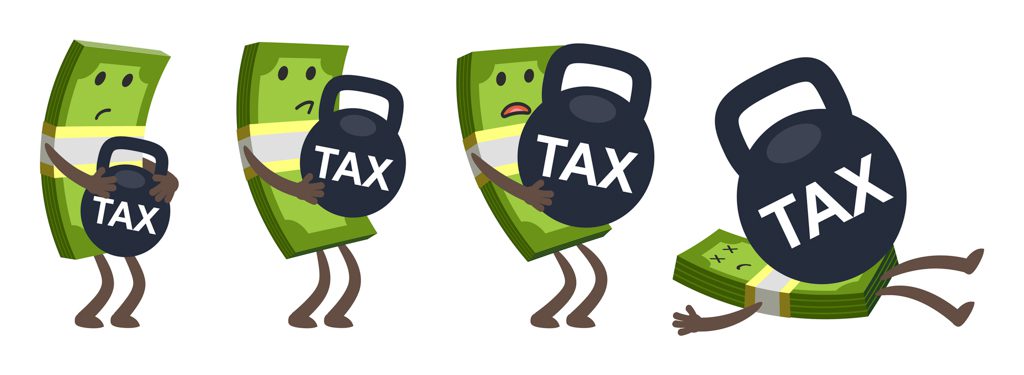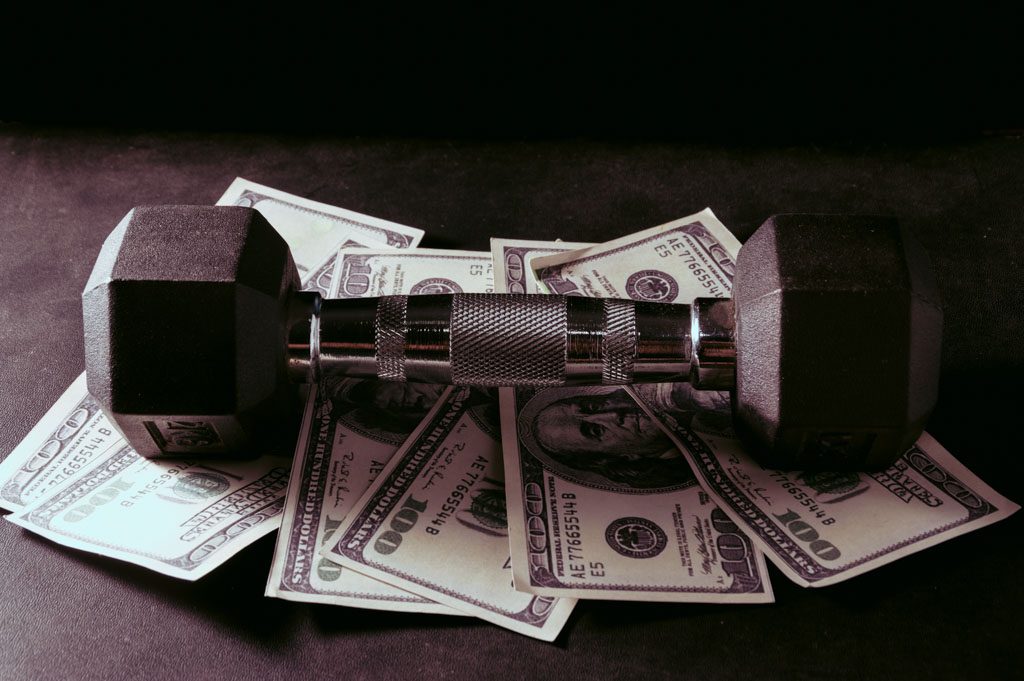Gyms don’t fail because of one big mistake.
They fail because lots of small mistakes are repeated over and over.
Each mistake costs time, money, energy or people—or some combination thereof. I’m sure you can think of a few “grand slams” where you paid the price in all four areas.
As these mistakes add up over time, gym owners find themselves working harder and harder—but earning less—until they run out of time, money or energy.
Passionate, hardworking but mistake-prone gym owners end up broke, burned out or both.
Keith Cunningham, in his book “The Road Less Stupid,” calls making repeated mistakes “paying the dumb tax.”
It’s a term we use a lot at Two-Brain because most gym owners are quietly paying this tax without even realizing it.
It’s time to stop.
What’s the Dumb Tax?
Definition: The dumb tax is the price you pay when you make decisions without understanding the math—or, worse, when you ignore the math because a decision “feels right.”
You pay the dumb tax when you guess, hope or follow the crowd without asking, “What’s the actual impact of this decision?”
You also pay the dumb tax when a supposed “business expert” presents “wisdom” and you don’t ask for data and proof.
Example: “I want 300 members!”
Sounds great. But have you done the math?
- Can you actually serve that many people with your current staff?
- Do you have enough space and equipment?
- Do you know what each client should pay to support the business?
- Do you have a clear plan to acquire and retain these clients?
- Have you reviewed the business models of gym owners who have done this successfully?
If the answer to any of those questions is “no,” you are paying the dumb tax.
I’ve Paid the Dumb Tax (You Don’t Have To)
Error: I gave discounts to military personnel, police officers, nurses, firefighters, teachers and others. (The list was very long.)
Dumb Assumptions:
- I believed discounts would build goodwill.
- I thought clients with discounts would refer more clients.
- I believed I could cover the discount by selling in volume (this never works in service businesses).
Result:
- Discounts didn’t build loyalty.
- Discounts didn’t increase referrals.
- Discounts gutted my margins.
- Discounts taught my clients that I didn’t believe my service was worth full price.
Keith Cunningham’s Analysis: Dumb.
Cost: The dumb tax was so costly here that I almost went bankrupt.
Data-Backed Lesson: Coaching is not a high-volume game, and gyms should not offer discounts. Other business models can be used to build a stable, profitable business.

Paying the Dumb Tax in 2025
Here are six common ways gym owners still pay the dumb tax—even though we know with certainty what they should do instead to avoid the penalty.
Mistake 1: Selling Discounted Paid-in-Full Memberships
This one comes from the world of access gyms, where most owners don’t care if people show up. It doesn’t work in a coaching business.
Why would you give a discount to your most loyal clients—the ones who would stick around anyway? It’s not strategy. It’s desperation.
I listed this one first because some business coaches will push this stupidity to “help you get cash in the door.” They’ll even suggest using the money to pay for their coaching. This is a horrible idea.
Mistake 2: Chasing Headcount
The best gyms don’t chase volume. They focus on value.
You don’t need 300 clients to earn a great living. Two-Brain gym owners routinely earn over $100,000 per year with 150 clients or fewer. The best gyms in the world focus on value, not volume.
You run a coaching business, not a membership warehouse.
Mistake 3: Competing on Price
“The gym down the street charges less!”
Yes. And it’s going out of business.
Provide value instead and set yourself apart as “the best steakhouse in town.”
You don’t want to win the race to the bottom. If another owner wants to run the cheapest gym in town, let them pay the dumb tax.
Mistake 4: Offering Big Discounts to Bring in Business
“Twenty percent off to get people in the door!”
You might as well tape a “low value” sign to your front window. Do you really want to be seen as “cheap”?
Discounts attract the wrong people. They don’t stick around. They don’t refer. They don’t value the service.
You’re not in a price war—you’re in an outcome war.
Mistake 5: Deep Discounts for Referrals
I’ve seen this one pop up lately: You give a current client 40 percent off for a referral, and you give the referred client 40 percent off, too.
This is dumb. Big discounts tell clients your service isn’t worth the full price. They also kill your margin and your momentum.
Your existing clients see your value and pay your full rates. Why slash them and sow the seeds of doubt?
The referred client? Why start the relationship with a bargain-basement play that weaves “cheap” into the relationship? The referring client obviously sees value in your services. So why tell the referred client, “Our services aren’t really that valuable”?
Here’s math on this brutal tactic:
- You charge $200 a month for a group membership.
- Your profit margin is 33 percent, but you go underwater to offer a 40 percent discount to a full-price client who provides a referral.
- You lose money on the referred client, too.
- With a 40 percent discount, each client pays $120 per month.
- You are losing money while telling your clients “this service is worth just $120 a month.”
Solution: Be an adult. Just ask clients for referrals. When they refer someone, say “thank you so much” and treat their friend like gold.
Mistake 6: Not Knowing Your Numbers
This one’s a certified gym killer—but it’s not always an insta-kill.
If you’re a young owner/operator who’s wearing all the hats and happy to work 60-hour weeks on a “hobby” without staff, you can get away with a few things for a short period. But this plan is unsustainable long term.
At some point, the dumb tax will come due, and it will be very painful. It will probably sink the business and have you sending applications to the fire department.
Here’s the reality: Even if you don’t have staff or a family to feed, your gym supports your clients’ health. If you go under, they quit training. Not knowing your numbers is therefore completely irresponsible.
This is doubly true if you have staff who rely on you for income.
It is triply true if you have a family who relies on you to pay the bills.
If you don’t know your numbers, you’ll believe lies, myths and stories other people are telling. You will make bad decisions regularly, and you will pass the bill for the dumb tax on to your clients, your staff and your family.
Don’t do that. Learn how to understand your numbers and key performance indicators (a mentor can teach you).
Whenever you hear, read or see any advice, you should ask tough questions and demand answers before taking action: “Which metric will this improve? By how much? In how long? How do you know this?”

What to Do Instead
Avoid the dumb tax by learning what really matters:
- Know your key metrics—average revenue per member (ARM), length of engagement (LEG), effective hourly rate (EHR) and net owner benefit (NOB).
- Build a high-value, low-churn model.
- Get mentorship to skip the trial-and-error phase. Go right to the correct, data-backed answer.
Or as Cunningham puts it: “Avoid the dumb tax by learning from people who’ve already paid it.”
You will make mistakes. That’s part of the process.
But you don’t have to make all of them.
With a coach and a clear plan, you can avoid huge mistakes and reach success sooner.
Stop paying the dumb tax. Start building the gym you actually want. To talk about metrics, data and proven tactics for gym growth, book a call here.

